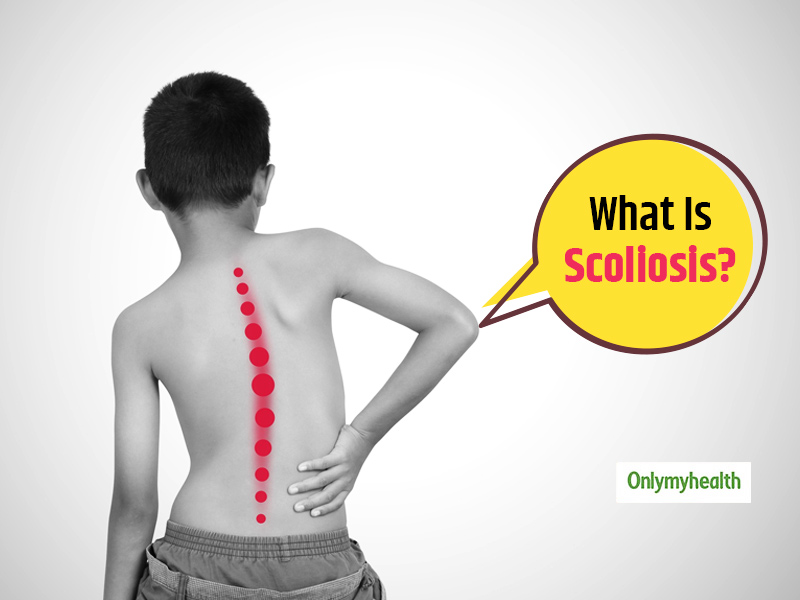
Do you know that India gets the most number of spinal deformities cases in the whole world? We can attribute this to accidents that happen now and then in the country along with social violence that comes along with protests. The other reasons are nutritional deficiencies, congenital problems or post-polio complications in some cases. Scoliosis is one of the most underrated spinal problems and often mild. Sadly, the people instead of being sympathetic, stigmatize scoliosis patients. In this article, we have shared all about scoliosis which is verified by Dr. SK Rajan, Head of Spine Surgery Department in the Artemis Hospital, Gurugram.
Table of Content:-
What is scoliosis?
Scoliosis is a spinal deformity where the patient’s spine is slightly abnormally curved. In most cases, this occurs since birth but often go unnoticed. It comes to notice when the condition is developed as the child reaches his teens. Scoliosis is considered when the spine is 10 degrees or more curved. In severe cases, the spinal curve is so much that is affects lung functions because of the space it has occupied in the chest.

What Causes Scoliosis?
In most cases, the actual cause of scoliosis is not known despite several diagnoses. The doctor assesses their condition and then suggests the best possible treatment for them. The other possible causes of scoliosis are:
Non-structural causes- sometimes when a person has one leg longer than the other, he or she may suffer from the spinal deformity. However, in most of these cases, there is no effect on the spine functioning.
Structural causes- the known causes of scoliosis that are structural include cerebral palsy, birth defects, muscular dystrophy or infections. In these cases, the curve becomes rigid and it gets difficult to treat them.
Congenital causes- This includes cases where the person develops scoliosis in the mother’s womb. In these cases, the vertebrates develop incompletely and the division is failed due to which a spinal curve is formed. This doesn’t come to notice when the child is young but as he approaches teenage, the curve becomes noticeable
Neuromuscular causes- This when the spinal deformity is caused due to weak muscle support. The patient cannot sit properly in this condition. This is mostly seen in patients of cerebral palsy, spinal muscular atrophy, down’s syndrome, etc.
Degenerative causes- people with bone mineral density suffer from spine wear and tear which causes the spinal curve. This is mostly found in the geriatric population and also happens with age.

Also Read: Everything About Tuberculosis Of The Spine And Bones
What are the Different Types of Spinal Curve?
In most cases, the curve is in the ‘C’ shape. This is when there is a single curve. In some cases, there are two curves forming the ‘S’ shape. This is referred to as a Double Major Curve.
- Dextro-scoliosis curve- When the spine is inclined towards the right side, the curve is called the Dextro-scoliosis curve. This includes right lumbar, right thoracic and right thoracolumbar.
- Levo-scoliosis curve- When the curve is inclined on the left. This includes left lumbar, left thoracic and left thoracolumbar.
What are The Symptoms of Scoliosis?
The first signs of scoliosis would be back pain as your spine is not erect. The other symptoms depend upon the spinal curve, its inclination and other factors.
- For example, if the curve is in the lumbar, there will be only back pain felt by the patient.
- If the spinal curve includes the thoracic spine part, the person can experience severe complications along with back pain. These are problems in breathing, lung problems, and in some cases, heart complications may also occur.
Also Read: Are You Calorie Deficit? These Signs Indicate That You Need To Increase Your Calories

What are the severe consequences of scoliosis?
The person may develop other physical symptoms depending upon the severity of the condition and position of the spinal curve. These include:
- Irregular symmetry where one shoulder or one hip appears higher than the other.
- Cosmetic deformity where the person may suffer psychological trauma due to the condition and physical appeal.
- Imbalanced trunk where a person looks as if his body is vertically tiled from one side where the curve is maximum.
- Walking difficulties as it with an imbalanced body, they may not be able to walk properly.
Also Read: Are You Suffering From Secondhand Stress? Watch Out For These Signs
What are the possible treatment options for scoliosis?
Before proceeding with the treatment, the patient is kept under observation. This is mostly considered in cases with mild spinal curves. This helps the doctor find the right treatment.
Bracing
If scoliosis is assessed timely during childhood, bracing is the right treatment to support the spine in moderate curve cases
Spinal Fusion surgery
When the curve is severe, noticeable and progressive, surgery is performed. This is mostly done when the curve is close to skeletal maturity where the structure is help using pedicle hooks, wires and screws to hold the spine straight.
Scoliosis has different types, based on which its treatment is done. If diagnosed timely, it can be treated to make the spine erect. Only in severe cases of multi curves, surgery is required.
Read More Articles in Other Diseases
How we keep this article up to date:
We work with experts and keep a close eye on the latest in health and wellness. Whenever there is a new research or helpful information, we update our articles with accurate and useful advice.
Current Version
